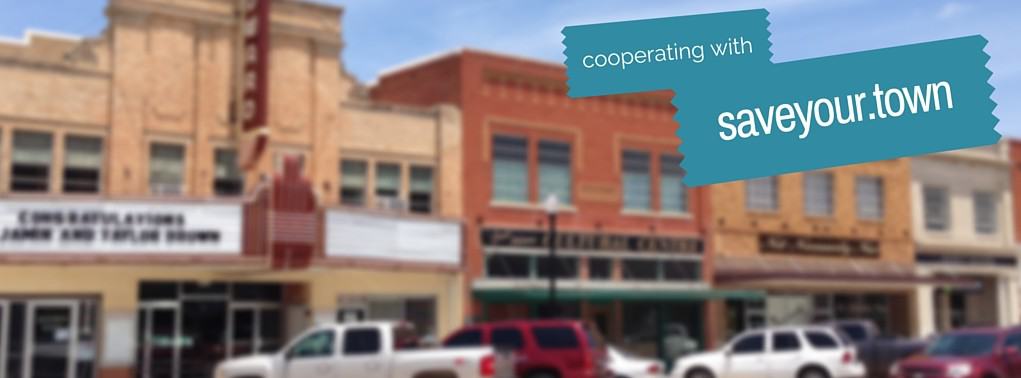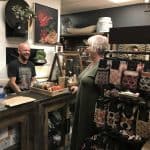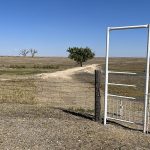Every Thursday, I publish a special newsletter. It’s a personal conversation with me and over a thousand rural friends that gives you a positive view of rural business and small towns. If you don’t already get it, join us right here:
I won’t ever sell or rent your email address to anyone else because I wouldn’t like that either.
Here’s last week’s email newsletter, along with some very interesting stories from you, the community.

Every small town organization wants more volunteers. So how do we get them? Photo by Becky McCray
How to get more volunteers in your small town
Volunteers and nonprofits: I’m not sure a small town could even exist without them. A couple of you recently brought up the role of volunteering and nonprofits, and that got me thinking about the common problem, “we can’t find any volunteers!”
See, small businesses play a role in supporting nonprofit organizations, and nonprofits are important to small towns. We’ve all seen those small town business owners who are reluctant to volunteer themselves and are even reluctant to support their employees in volunteering.
Really though, that small business owner, and every small business owner, has a ton of things in common with those nonprofits. We’re all working on the same management, people, financial, and regulatory issues. We face the same problems. Nonprofits generate economic impact very much like businesses do.
Our local economy won’t prosper by accident; we have to cooperate to make it happen. There are no challenges that we can solve without working together.
So, we need each other. But how do we get together?
How do we get more volunteer participation?
After thinking about this question since about 1990, I have a few thoughts. You have to start with changing you, because you can’t change them. There is no magic way to make them volunteer more. The big secret is there is no them; there’s only us. And we’re all in this together.
The implication: You have to spend much more time thinking and working from outside your own perspective.
Your project is not the center of their world.
You care a lot about your project or your non-profit. Well, guess what? Your successful small business owners do not care. They care about their business. From their point of view, that is how they got to be successful in the first place.
I remember talking to a chamber of commerce leader. She was working on an event that she had come up with. It looked to me like it would be a wonderful thing for the community and for the businesses if they could do it together. She told me that she had walked into downtown businesses, handed them the event flyer and immediately asked how they wanted to participate. That seems reasonable, right? I mean, it’s going to help those businesses, so they should be all over it, right? Well, it hadn’t worked out like that. That was why she was telling me about it!
I suggested that the business owners might react better to someone who came in, learned about the people and their businesses. Only then would it be time to talk about events. More importantly, it would be time to listen to the kind of events that would work for them, and work together to create something even better for both the nonprofit and the business.
Your current volunteer opportunities don’t fit.
Throw away all your traditional volunteer roles, and make something new. Today, younger volunteers want short-term, not all-year. They want action-oriented, not meeting-oriented. They want to connect and communicate entirely online, not by paper and phone calls. I’m not really that young, and that’s what I want, too!
You have to let go of control.
I hear this over and over from younger people in small towns. They want to help somehow, but they run into existing volunteers who won’t let them help. The people currently in charge say they want help, but they won’t let go and trust the new young volunteers.
I know the young people might fail. They will make mistakes. They might even quit half-way through. But that is OK. They have to do that in order to learn. And if we’re honest, we learned by making mistakes, too.
Talk less about you and more about them.
Every communication that leaves your lips, your keyboard, your printer or your pen, should be about them. Answer their questions. Be a social media mirror. Share your community’s own photos and stories. Let them speak in their own words, their own voice, when possible. (Read more about “Be a social media mirror” here.)
What your peers said
When I shared this in the newsletter, I received some interesting stories back. I want to share them with you.
Caleb T. Pollard
Executive Director
Valley County Economic Development & Ord Area Chamber of Commerce
I’ve sent this along to our team here in Ord and the response has been very positive to your writing about young people.
Joe Crawford, Executive Director
Estill Development Alliance
Estill County Chamber of Commerce
Yet again, it appears that you’ve been listening to my conversations over the last couple weeks and wrote a post directly to ME! I deal with this issue constantly on behalf of our small town, CED nonprofit. I have hit the same walls and heard the same complaints.
The most successful approach I’ve found is to empower someone who already “drank the Kool-Aid.” Periodically, and through different tracks, an individual will flat-out tell me that he or she believes in what we’re trying to do and wants to get more involved. These are brave souls because many times a statement like that will get you into volunteer hell – being put on every board and committee and in charge of every project nobody else wants to fool with.
When someone says this to me, their first question is normally, “What do you need me to do?” I reply with, “What are you interested in?” If the response is something we have an existing project or program addressing, then I put them in touch with the champions of that cause.
If it’s something new, I encourage them to talk with their families and friends to brainstorm ideas for how to address that issue. They then return to me and we hash out a one-page project plan (which I’ve adapted from works by you, Becky Anderson, and Peter Hackbert). At this point, I tell them to run with it. They have a roadmap with goals and objectives that I know are in line with our mission and strategic plan.
If funding is an issue, we work on the fundraising plan. If they need resources or introductions, that’s what I’m here for. This doesn’t happen every day, but I have a few of these super-volunteers working with us now. It’s truly amazing. For some folks, just helping them define what they want to accomplish and giving them support turns them in to champions, ambassadors and leaders.
As a quick example, one young lady fell into a chamber vice president position for us because the retail business she works for holds the office and her predecessor moved away. She’s a very quiet individual who knew very few folks in the community because she had just moved here. After telling me she wanted to get more involved to meet more people, I went through the process and found she was interested in music and kids.
Next thing I know, she has put together a local music festival highlighting the teenagers in rock bands who never get invited to perform at other community music events. It happens June 1st and looks like it will be a huge success. That young lady has blossomed and is already talking about what she wants to conquer next. She has also engaged new folks to get involved with our organization who never considered it before.
Thanks again, Becky, for everything you do. You’re a constant source of inspiration for me. Keep doing what you do!
Best,
Joe
Elaina Turpin
Assistant Director
Stayton Sublimity Chamber of Commerce
Here in Stayton, Oregon we have a monthly Community Roundtable. Anyone is invited to attend. We are a small community of two towns, Stayton and Sublimity, only separated by a Hwy. Together they population is about 10,000. We usually have the Superintendent for the School District, either the city planner or city administrator, the director of the Chamber, a representative from one of the Econ. Dev. Agencies and then various businesses attend the meeting. We hold it in a café in our historic district so that all the small businesses around there can just walk. It’s informal and friendly. You share what your business or organization is up to.
As a result of this meeting the school district and SEDCOR (Strategic Economic Development Corporation) have formed a partnership in which SEDCOR helped the school start a welding program, teaching students a trade before they even leave high school. The students weld together metal bins which the local cannery, NORPAC, uses for produce. We also started a community clean up day. Businesses donated $ and prizes to be given away to the community members that donated their time one Sat. picking up trash and pulling weeds along the main streets.
Just getting everyone together to speak we’ve found that there are a lot of common goals and program overlaps. Letting everyone have their say has naturally formed relationships and partnerships that are mutually beneficial.
I just want to clarify that when I say we, I mean the community, not the Chamber which I work for. The Chamber has helped promote and connect the organizers with businesses but we weren’t the instigators of the clean up day.
Elaina










